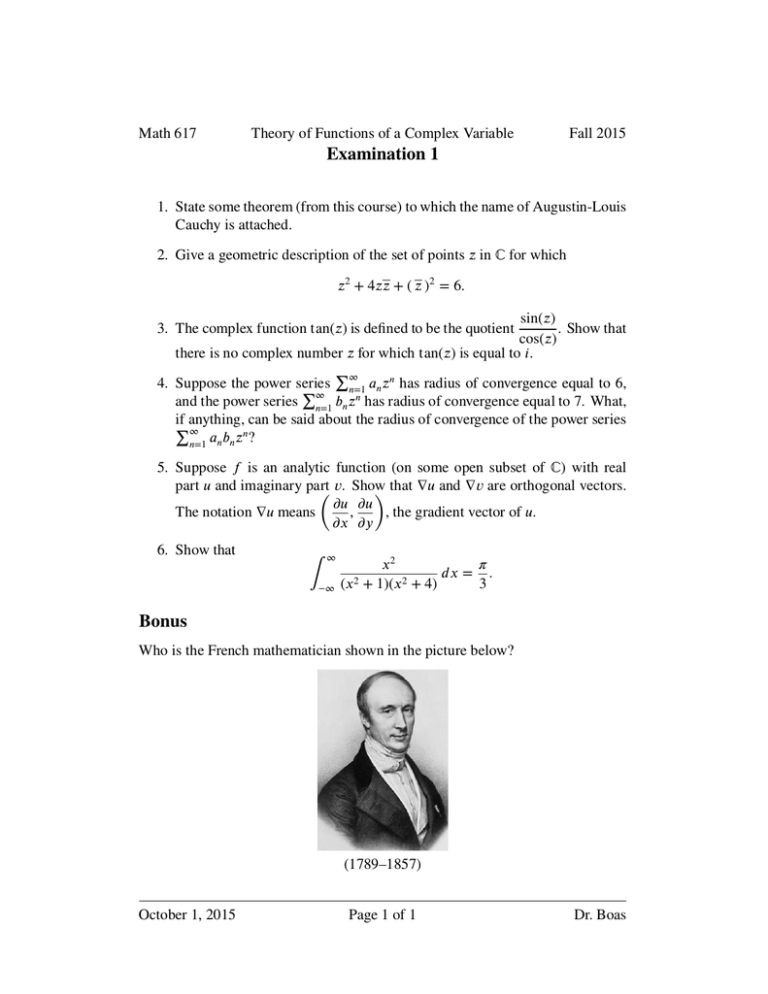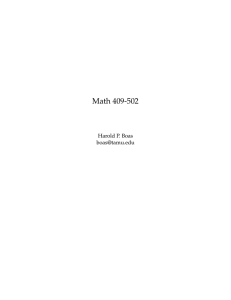Examination 1
advertisement

Math 617 Theory of Functions of a Complex Variable Fall 2015 Examination 1 1. State some theorem (from this course) to which the name of Augustin-Louis Cauchy is attached. 2. Give a geometric description of the set of points 𝑧 in ℂ for which 𝑧2 + 4𝑧𝑧 + ( 𝑧 )2 = 6. sin(𝑧) . Show that cos(𝑧) there is no complex number 𝑧 for which tan(𝑧) is equal to 𝑖. ∑∞ 4. Suppose the power series 𝑛=1 𝑎𝑛 𝑧𝑛 has radius of convergence equal to 6, ∑∞ and the power series 𝑛=1 𝑏𝑛 𝑧𝑛 has radius of convergence equal to 7. What, if anything, can be said about the radius of convergence of the power series ∑∞ 𝑎 𝑏 𝑧𝑛 ? 𝑛=1 𝑛 𝑛 3. The complex function tan(𝑧) is defined to be the quotient 5. Suppose 𝑓 is an analytic function (on some open subset of ℂ) with real part 𝑢 and imaginary part ) that ∇𝑢 and ∇𝑣 are orthogonal vectors. ( 𝑣. Show 𝜕𝑢 𝜕𝑢 , , the gradient vector of 𝑢. The notation ∇𝑢 means 𝜕𝑥 𝜕𝑦 6. Show that ∞ ∫−∞ 𝜋 𝑥2 𝑑𝑥 = . 2 2 3 (𝑥 + 1)(𝑥 + 4) Bonus Who is the French mathematician shown in the picture below? (1789–1857) October 1, 2015 Page 1 of 1 Dr. Boas











